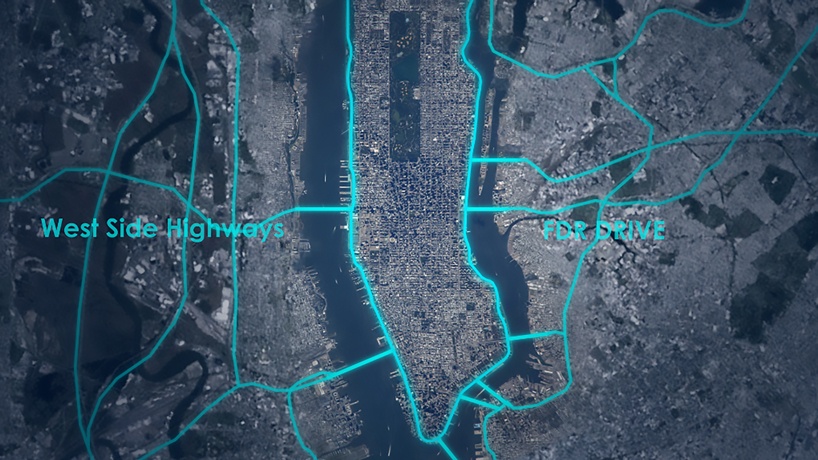
New York, NY
Architecture/engineering firm EDG, noting that New York City faces a unique and complex set of challenges when it comes to navigating highways and byways, has offered an equally unique and innovative proposal: LoopNYC suggests the conversion of one lane of existing cross streets and highways into driverless automobile expressways. The result? A safe, sustainable and efficient “microhighway” automated traffic grid.

Says John J. Meyer, EDG founder and managing partner, “NYC, like so many urban centers, is facing an imminent infrastructure crisis as the continuous influx of residents will soon be insupportable. As a proactive response to the inevitable driverless vehicle technology, we created a solution that is simultaneously simple and implementable. by automating a portion of the traffic grid with driverless vehicles.”
The proposed automated traffic grid would optimize the traffic flow into and out of the city: The FDR drive and West Side Highway would, according to the proposal, have one lane in each direction designated for automated vehicles that would connect to selected exclusive crosstown lanes at 14th, 23rd, 42nd 57th, 86th and 110th Streets. Once inside Manhattan, driverless vehicles would use these as designated expressway loops.
Pedestrian overpasses and underpasses would keep pedestrians separated from driverless vehicles to pedestrian safety. A route that currently takes 40 minutes (Grand Central to lower Manhattan and back) would, with the proposed auto-grid in place, take 11 minutes–saving 30 minutes a day for the average commuter.


The next step in this vision would be to reclaim pedestrian pathways running the length of Manhattan over the aforementioned tunneled cross streets, creating more open space via a 13-mile-long pedestrian park. Broadway, for example, would be transformed into a linear green space, allowing commuters on foot and on bikes to use paths to make their way up and down the island, enjoying its natural rolling hills. Better yet, access would never be more than six blocks from any of the city’s inhabitants.
In addition to the obvious health and quality of life benefits that would result, the proposed transformation would provide environmental benefits like air and water purification, noise filtering and increased drainage. And, of course, there would be more interaction between neighbors and the economic benefit of increased pedestrian traffic for shops and restaurants along the way.
Story originally appeared in 6sqft.: https://www.6sqft.com/loop-nyc...
1 Comment
Awesome work, team!
Block this user
Are you sure you want to block this user and hide all related comments throughout the site?
Archinect
This is your first comment on Archinect. Your comment will be visible once approved.